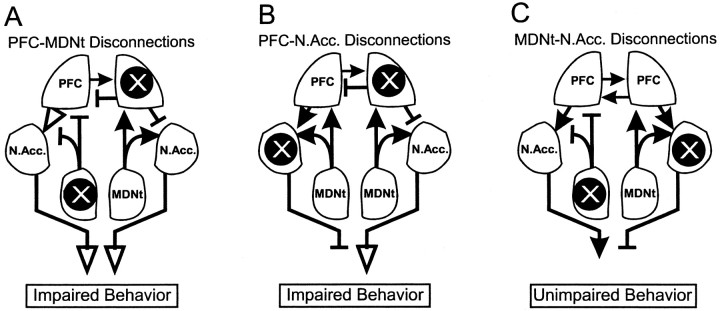Fig. 5.
Diagram of the anatomical connections investigated in the present study between the MDNt, the prelimbic cortex region of the PFC and the N.Acc. X, Location of the unilateral inactivations to the MDNt, PFC, or N.Acc. for the delayed SWSh task; solid arrows, intact pathways;open arrows, pathways that are not blocked but do not carry the relevant information because of a concomitant lidocaine-induced lesion upstream of this pathway; T symbols, blocked, nonfunctional pathways. A, Proposed route of information transfer between the PFC and MDNt during the delayed SWSh task. By disconnecting the PFC–MDNt pathway, information cannot be processed by the PFC to generate appropriate responses after a delay, thereby disrupting appropriate output (impairment). B, Proposed route of information transfer between the PFC and N.Acc. during the delayed SWSh task. Disconnection of the PFC–N.Acc. pathway prevents the flow of information from the PFC through the N.Acc. to motor output centers (impairment).C, Proposed route of information transfer between the MDNt and N.Acc. during the delayed SWSh task. Information from the MDNt may be routed primarily through the PFC and subsequently to the N.Acc. Thus, although the pathway from the MDNt to the N.Acc. is disconnected, relevant information may still be transferred from the unanesthetized MDNt to the ipsilateral PFC and subsequently routed to the contralateral N.Acc., allowing for appropriate output (no impairment).

